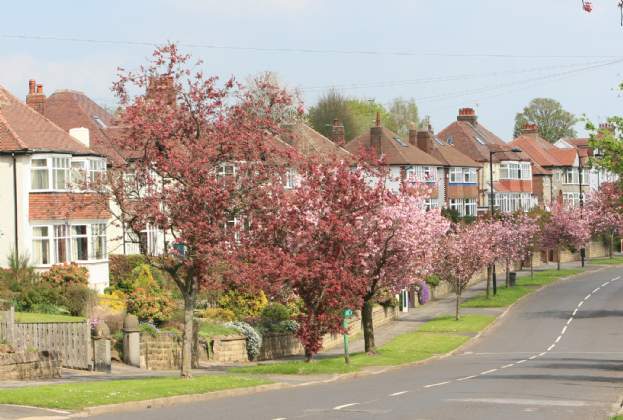
House prices show greater annual growth but the market exuberance at the start of 2024 has settled
House prices fell by -0.2% in March, but annual growth rose to 1.6%, according to Nationwide. In the first quarter of 2024 northern regions saw the most growth, including the North East (2.3%) and the North West (1.6%). London also has seen higher than average quarterly growth (1.6%) as the pandemic era ‘race for space’ continues to unwind.
The initial flurry of activity since the start of 2024 has begun to settle. Cuts to mortgage rates catalysed market activity, with mortgage approvals in February at their highest level in 17 months and just -7% below the 2017-19 average, according to the Bank of England (BoE). It is unlikely that this rate of growth in activity will continue in March, as mortgage rates have now almost returned to late December levels. The number of sales agreed in March was just 2% above the 2017-19 average, down from 13% above in February, according to TwentyCI.
The number of completed transactions ticked up but remained subdued, with 73,360 in February, according the HMRC. This showed a slight recovery but was still -11% below the 2017-19 average.
Demand remained positive but has been tempered by higher mortgage rates. The improved market sentiment has encouraged more sellers to put their home on the market, increasing stock levels, yet buyers still face affordability constraints. The number of surveyors reporting increasing supply grew while the number reporting increasing demand held steady, according to the RICS February survey. This change in the supply/demand balance could slow price growth.
The majority of areas saw house price falls in the more lagged Land Registry data. Scotland was the only region with positive annual growth (1.1%) to December 2023. The largest falls were in the South East (-3.6%) and East of England (-3.6%), especially in more rural hotspots that had seen strong price growth during the pandemic such as Hastings (-11.2%), Thanet (-8.6%), and Lewes (-8.1%).
The first base rate cut is getting closer as labour market and inflation expectations normalise. Inflation continued to undershoot expectations and the BoE anticipates it to fall below the 2% target in April. The Bank remains wary of high wage growth and the potential impact of the increase to minimum wage on 1st April, but wage growth has also slowed in recent months. Oxford Economics still expects the first cut to come in June.
Annual rental growth across the UK in February was 7.1% according to Zoopla, down from 7.5% in the year to January. All regions have now seen annual rental growth fall to below 10%, but there remained regional variation with strong growth still evident in Scotland (9.9%), the North East (9.9%), and Wales (9.5%).
